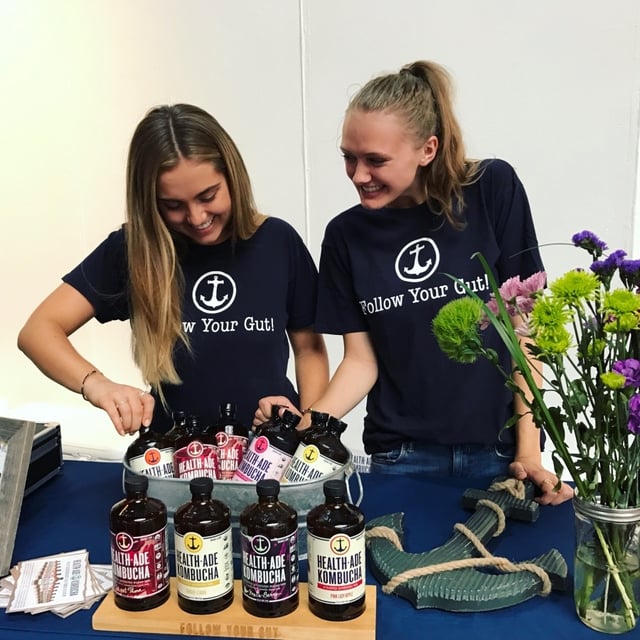What Is Field Marketing?
Field marketing is a branch of direct marketing. It involves brand representatives going out into the “field” to put product in the hands of potential customers.
Though originally thought of as a form of one-way communication, it’s evolved into a direct link between a company and its consumer. Field marketing presents a unique opportunity for brands to expand their presence and ultimately increase sales.
Like all communication, it takes many forms. To gain a deeper understanding of field marketing, we dive into its three main types: product demonstrations, direct selling, and guerilla marketing supplemented with stories from the field.
Product Demonstrations
Nothing brightens up a trip to the grocery store like a free sample of a new snack or drink. These samples are given out as a form of product demonstration.
The Goal:
The goal here is for a brand to get its product directly into the hands of potential customers. This humanizes the brand and increases awareness. The idea is, if you have a fantastic product, all it takes is a little taste to spark a customer’s interest.
Product demos can turn strangers into loyal customers. They’re an ideal form of field marketing for brands newer to the market looking to make bounds in the awareness department.
Though brands initially incur a small loss as a result of giving away product and employing staff, often the return is well worth it.
According to a study done by Arbitron and Edison Media Research as reported by Marketingcharts, 35 percent of those who sampled a product purchased it that same day.
A significant 26 percent of those completely new to the product bought right away.
These metrics are great to show the success of product demos. However, most are considered successful if a lot of samples are given out -- demos are all about increasing brand awareness and recognition.
Who’s Involved:
This job is typically performed by a brand ambassador or brand representative. These workers are invited into a store for a few hours at a time to make a temporary home with their branded materials and give away product.
In most cases, product samplers are not employed by the store itself -- something an avergae shopper may not know.
A successful product demonstration is a win for both the brand and store involved, since a boost in sales yields profit for both parties.
From The Field:
“Product demos are really a fun way to interact directly with customers. My favorite part is being able to speak candidly with people about why Health-Ade really is the best tasting and highest quality kombucha you can buy. I’d say each demo is like 10 percent scripted and 90 percent genuine conversation. Not only is it about giving out physical samples, but also just being able to speak on a person-to-person level -- that’s really special. It’s really easy to talk about such a great product.”
-Hannah Carroll
Health-Ade Brand Ambassador

Direct Selling
Direct selling is often piggybacked onto product demos -- once customers try a product, brand representatives will often push them to purchase right there.
Other types of direct selling include pop-up shops and promotional tables at events.
According to PopUp Republic, the pop-up industry has grown to approximately $10 billion in sales. Since pop-ups are temporary, brands have more freedom to experiment with creative merchandising and design.
Pop-up stores feel unique and exclusive, which is part of the appeal.
Promotional tables are similar to pop-up stores. Large festivals and fairs will often have multiple companies partner up to sell their products to visitors. It’s another way to get more eyes on a brand outside the traditional point of sale.
The Goal:
The goal here is similar to that of product demos: raising awareness. Although the endgame is more focused on profit, direct selling works to boost a brand’s overall image and visibility by establishing it as agile and readily available.
The best metric to gauge the success of a pop-up is visitors, as Jeremy Baras of PopUp Republic told Retail Touchpoints:
“Yes, retailers want to make as much money as possible and there’s a certain amount of success that’s measured through revenues and P&L (profits and loss) statements. But the amount of customers walking through your store shows that they are interested in and aware of your brand, which arguably is just as valuable as making that sale, because that means that you have the potential for them to be loyal followers of your specific brand.”
-Jeremy Baras
PopUp Republic
From The Field:
I visited The Renegade Craft Fair in Boston to see direct selling in action.
Saturday and Sunday were filled with lively exchanges between vendors and visitors from Los Angeles to Nova Scotia. There were plenty of hand-sewn dresses and beaded bracelets along with printed maps, incense, wood carvings and bitters -- all within a beautiful naturally lit space in Boston’s South End. There was even a DJ and a Jamaican food truck.
Each vendor commanded its own compact space in the large room. Sellers brought wide banners proudly bearing their company’s logo along with other branded hardware to display their crafts. Every booth was artfully constructed; these were clearly direct-selling experts.
Vendors conversed with visitors and sold products on the spot. Many used Square to easily process credit cards.
Representatives from Health-Ade Kombucha were also present, employing product demonstration and direct selling to sample and sell their kombucha.

Guerilla Marketing
Guerilla marketing -- named after guerilla warfare -- is a ferocious field marketing tactic. It involves getting your product out in unexpected ways.
According to Creative Guerrilla Marketing, “this alternative advertising style relies heavily on unconventional marketing strategy, high energy and imagination.”
Red Bull is the champion of guerilla marketing, often giving away huge quantities of product to unsuspecting consumers in “product drops” and other unique methods.
The Goal:
The goal of guerilla marketing is to generate buzz about your product. The idea is, if you do something crazy enough, people are going to talk.
A few categories of guerilla marketing include astroturfing, undercover marketing, and viral marketing. Here’s how they break down:
Astroturfing tends to have a negative connotation. It involves creating artificial buzz for a product, service, or political message. Undercover marketing employs “hidden” promotion activities, such as speaking loudly about a product among a targeted audience. Viral marketing emcompasses all other guerilla marketing efforts, with the ultimate goal of generating maximum noise around a product or service.
Each type assumes a different level of risk and reward. However the overarching goal for all types is to create awareness -- not so different from the previous, tamer types of field marketing.
From The Field:
We spoke with an actual brand ambassador from Red Bull to get the inside scoop on the brand’s renowned guerilla marketing program. Check out the conversation in our blog post here! Or, have a look at Bloomberg's video about the brand's program below.
To learn more about field marketing, visit our comprehensive blog post here.




.png?width=480&height=252&name=PRESS%20RELEASE-2%20(4).png)

